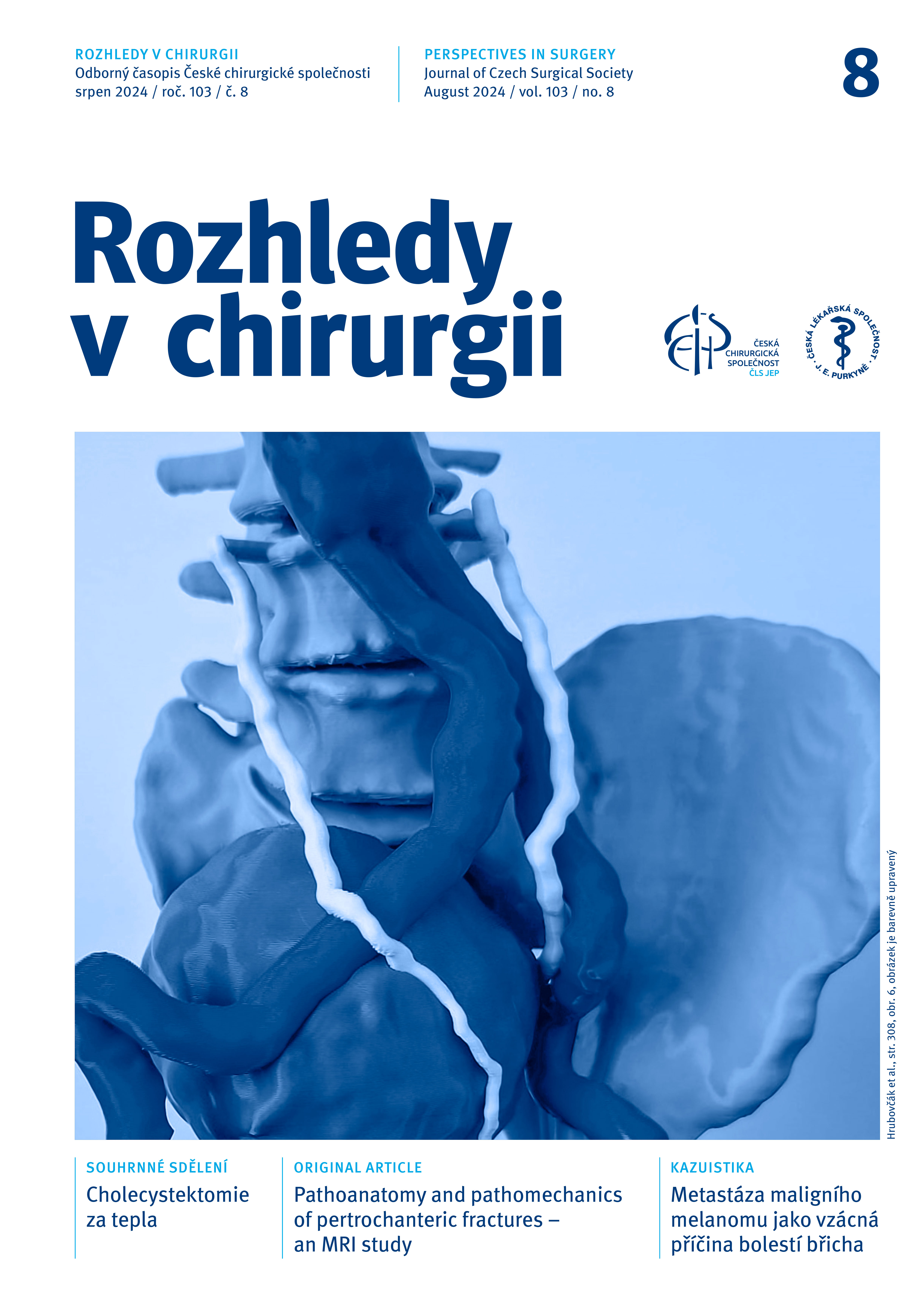Abstract
Introduction: 3D printing, a concept over 40 years old, is finding broader application in clinical practice thanks to technological advancements. At University Hospital Ostrava, 3D printing is utilized to create anatomically accurate models of specific patients before surgical procedures based on imaging data.
Case series: 3D printing is employed as a complement to conventional imaging methods to produce morphologically precise models of anatomical structures of individual patients. These models primarily serve for preoperative planning in elective abdominal, vascular, and thoracic surgery. They are also used in planning osteosynthesis of complex fractures and corrective osteotomies. Multicolor printing, although increasing the process‘s time demands, allows better clarity and differentiation of individual anatomical structures within a single model.
Discussion: Compared to 2D images, 3D models provide better spatial orientation and awareness of the operated structures, contributing to improved surgical outcomes. The benefits of 3D printing in preoperative planning and patient education are confirmed by studies across the fields ranging from cardiac surgery to traumatology.
Conclusion: After overcoming initial challenges, 3D printing has become a reliable component of the surgical arsenal at University Hospital Ostrava for elective surgery. While 3D printing does not represent a universal answer to all medical challenges, its role is highly beneficial and promising in many indicated cases.
doi: 10.48095/ccrvch2024305


